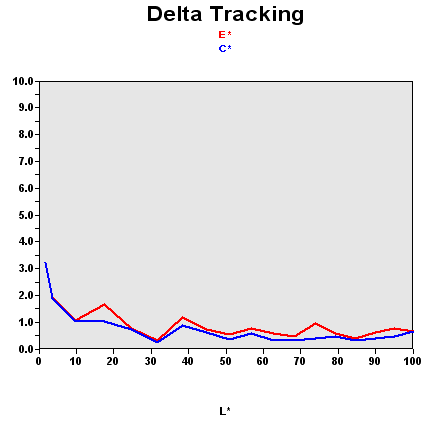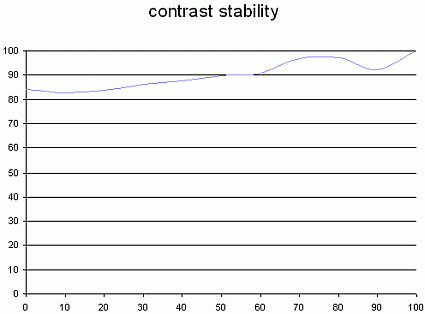Can 19" LCDs Pass the Frag Test?
Philips 190X5's Electronics Make The Difference
Not surprisingly, the 190X5 uses an Philips LM190E03 panel. However, the electronics change from one model to another, and the difference shows:

Our tests show that 82% of the values are perfect, and 96% of the values can be calibrated. It has to be admitted that LCD monitors have made enormous progress in color rendering. And something else we've noted is that TN monitors are now capable of rivaling their competitors that use PVA/MVA technology. The performance range in terms of color fidelity is narrowing. Even if the rendering of very dark tones is not as good as the LCD92VM's, the area where the 190X5 lacks performance (Delta > 2) is smaller.
| Black spot | White spot | Contrast |
|---|---|---|
| 0.30 | 164 | 546: 1 |
The black level is really excellent for a monitor meant for gaming. Even more so since that calibration was gotten with a very acceptable luminance level - 164 nits, which is a good brightness value for everyday use. The result is very deep blacks. It's the choice of the backlighting and the electronics that makes the difference.
Where contrast is concerned, on the other hand, the 190X5 could do better:

The kind of stability we'd expect wasn't really there, and you'll have to make any changes in brightness very carefully. Note that the monitor we tested had a slight dominance of green that we had to correct.
Stay on the Cutting Edge
Join the experts who read Tom's Hardware for the inside track on enthusiast PC tech news — and have for over 25 years. We'll send breaking news and in-depth reviews of CPUs, GPUs, AI, maker hardware and more straight to your inbox.
Current page: Philips 190X5's Electronics Make The Difference
Prev Page Philips 190X5's Gaming Luxury Next Page Spatial UniformityMost Popular

